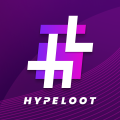Promotion
Publish ICO
Coins
Calendar
Crypto Events
News
DeFi
NFT
WEB3
Games
Trends
-
EN
English Русский Deutsch Español French Italian Portugues Indonesian Turkish Dutch العَرَبِيَّة বাংলা 中文(简体) 한국 हिन्दी 日本語
- Sign In

Imagine a scalable, quantum-resistant blockchain securing an uncensorable and free internet through a hack-resistant Operating System, virtualizing access to your desktop and digital content from any computer in the world. Nexus is bringing this possibility to life with an end-to-end decentralized platform designed to empower every human being with technology to reclaim their digital identity.
Your gateway to Nexus begins with a username, password and PIN. Send free and reversible transactions, while staking NXS to receive rewards. Uses range from invoicing clients, to issuing contracts, creating NFTs or Namespaces (Dot-com equivalent).
Nexus’ integrated API makes developing decentralized applications (DApps) easy with “no-code” web tools like Bubble. Create tokens and assets (NFTs), design contracts, or use our templates. All our features are available on the public network or a private (hybrid) chain.
Nexus is a vibrant and creative community with a passion to decentralize the world. Whatever your calling, you can shape the future through your contribution or by simply spreading the word.
TRITIUM
TRITIUM++
AMINE
OBSIDIAN











This offer is based solely on information provided by the offeror and other publicly available sources.
The token sale or exchange event is completely independent of ICOholder. ICOholder is not involved in any way, including technical support or promotion.
We list token sales from entities with which we have no relationship to help users track overall activity within the token sector. This information is not intended as advice, and you should seek professional or specialist guidance or conduct your own due diligence before making any decisions based on our content.
Any terms and conditions regarding token acquisition are solely between contributors and the token issuer. ICOholder is not the seller of these tokens.
ICOholder is not legally responsible for any representations made by third parties about any token sale. Any claims for breach of contract must be directed against the listed token issuing entity.
If you have concerns about the nature, legality, or propriety of a token sale or the involved individuals, please contact info@icoholder.com with detailed information.